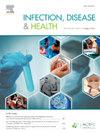巴勒斯坦护生对针刺伤害的患病率、知识和意识及其相关因素。
IF 2
Q2 PUBLIC, ENVIRONMENTAL & OCCUPATIONAL HEALTH
引用次数: 0
摘要
背景:实习护士在临床培训过程中容易发生针刺伤(nsi)引起的血源性感染。为了远离威胁,他们;必须了解国家安全情报的每一个方面。该研究的目的是确定水平;学生护士对nsi的了解情况,并调查其患病率和患病率;巴勒斯坦的预防战略。方法:采用描述性横断面设计,于2024年2月20日至2024年3月20日对449名实习护士进行在线匿名调查。问卷的三个部分评估了学生的人口统计学特征、护士的nsi知识、nsi暴露情况以及预防措施的使用情况。的数据;使用SPSS Version 26进行分析。结果:共有449名学生回答了问卷;女性345例(76.8%),平均年龄21.08岁(SD = 2.47)岁。总分10分,总知识平均得分为7.04分(SD = 1.51)。近105名学生(23.4%)报告至少接触过一次nsi,其中大多数是初中生67(63.8%)。其中,69.5%发生在开放医院,41.9%是由于抽血技术造成的,67.6%的学生没有报告伤害事件。结论:为降低血源性疾病的传播风险,提高护生工作场所的安全性,有必要开展培训。临床护理管理者应该制定切实可行的计划来降低nsi的发生率。本文章由计算机程序翻译,如有差异,请以英文原文为准。
Prevalence, knowledge, and awareness of needle stick injuries among nursing students in Palestine and associated factors
Background
Student nurses are vulnerable to blood-borne infections from needle stick injuries (NSIs) during clinical training. To stay safe from the threats, they; must comprehend every facet of NSIs. The study's objectives were to determine the level; of knowledge among student nurses about NSIs and to examine their prevalence and; prevention strategies in Palestine.
Methods
A descriptive, cross-sectional design was employed on a sample of 449 student nurses through an online anonymous survey between February 20, 2024, and March 20, 2024. The three questionnaire parts assessed the demographics of the students, the nurses' knowledge of NSIs, their exposure to NSIs, and their use of preventative measures. The data; were analyzed using SPSS Version 26.
Results
A total of 449 students answered the questionnaire; 345 (76.8 %) were female and their average age was 21.08 (SD = 2.47) years. Out of ten, the average score for total knowledge was 7.04 (SD = 1.51). Nearly 105 students (23.4 %) reported having been exposed to NSIs at least once and most of them were junior students 67 (63.8 %). Of these, 69.5 % happened in open hospital units, while the technique of withdrawing blood caused 41.9 % of NSIs, and 67.6 % of students didn't report the incident of injury.
Conclusion
Training programs are necessary to reduce the risk of blood-borne disease transmission and improve workplace safety for nursing students. Clinical nursing administrators should create practical plans to lower the incidence of NSIs.
求助全文
通过发布文献求助,成功后即可免费获取论文全文。
去求助
来源期刊

Infection Disease & Health
PUBLIC, ENVIRONMENTAL & OCCUPATIONAL HEALTH-
CiteScore
5.70
自引率
5.70%
发文量
40
审稿时长
20 days
期刊介绍:
The journal aims to be a platform for the publication and dissemination of knowledge in the area of infection and disease causing infection in humans. The journal is quarterly and publishes research, reviews, concise communications, commentary and other articles concerned with infection and disease affecting the health of an individual, organisation or population. The original and important articles in the journal investigate, report or discuss infection prevention and control; clinical, social, epidemiological or public health aspects of infectious disease; policy and planning for the control of infections; zoonoses; and vaccination related to disease in human health. Infection, Disease & Health provides a platform for the publication and dissemination of original knowledge at the nexus of the areas infection, Disease and health in a One Health context. One Health recognizes that the health of people is connected to the health of animals and the environment. One Health encourages and advances the collaborative efforts of multiple disciplines-working locally, nationally, and globally-to achieve the best health for people, animals, and our environment. This approach is fundamental because 6 out of every 10 infectious diseases in humans are zoonotic, or spread from animals. We would be expected to report or discuss infection prevention and control; clinical, social, epidemiological or public health aspects of infectious disease; policy and planning for the control of infections; zoonosis; and vaccination related to disease in human health. The Journal seeks to bring together knowledge from all specialties involved in infection research and clinical practice, and present the best work in this ever-changing field. The audience of the journal includes researchers, clinicians, health workers and public policy professionals concerned with infection, disease and health.
 求助内容:
求助内容: 应助结果提醒方式:
应助结果提醒方式:


